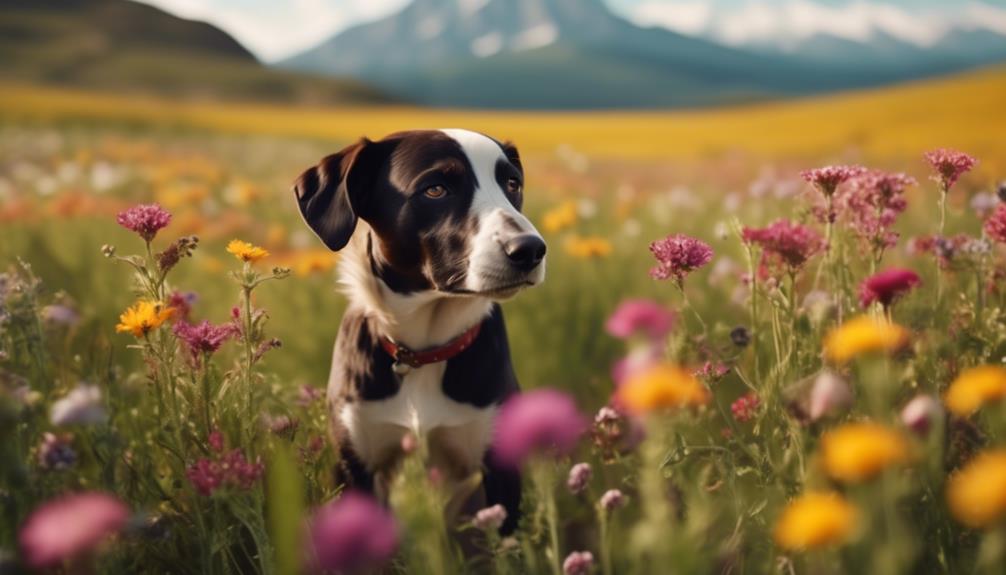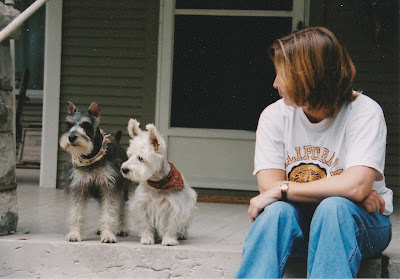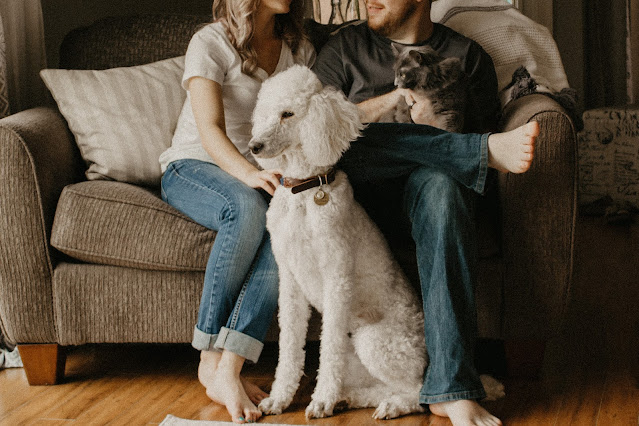How Do I Know If My Dog Is Ready For New Experiences

How Do I Know If My Dog Is Ready For New Experiences: So, do you think your furry friend might be ready to step out of their comfort zone and try something new? Well, buckle up, because we’re about to dive into the world of canine readiness. It’s not always easy to gauge if your dog is prepared for new experiences, but fear not, we’ve got you covered.
From behavioral indicators to body language cues, past experiences to exposure to similar environments, training and obedience levels to health and physical fitness, and even age and development stage, there are several factors to consider. But don’t worry, we’ll break it all down for you, step by step. So, grab a leash, and let’s take a closer look at how to determine if your four-legged companion is truly ready for new adventures.
Signs of Readiness
If you’re wondering whether your dog is ready for new experiences, there are several signs of readiness to look out for. Dogs that are ready for new experiences often display increased curiosity and eagerness to explore new environments. You may notice that your dog becomes more interested in sniffing around, investigating new objects, and venturing into unfamiliar territories. This curiosity is a positive indicator that your dog is open to new experiences and is ready to expand their horizons.
Another sign of readiness is positive body language. Dogs that are ready for new experiences often exhibit a relaxed posture and a wagging tail. Their body language communicates a sense of comfort and confidence, indicating that they are comfortable in their surroundings and open to new interactions.
In addition to body language, dogs that are ready for new experiences demonstrate calm and relaxed behavior in unfamiliar situations. They may encounter new people, animals, or objects with curiosity and interest rather than fear or anxiety. This ability to remain calm and composed suggests that your dog is ready to handle new experiences with ease.
Furthermore, a dog’s readiness for new experiences can be observed through their ability to focus and respond to training cues in different environments. If your dog can maintain their attention and follow commands in various settings, it indicates their adaptability and readiness to take on new challenges.
Behavioral Indicators
Pay attention to your dog’s body language, as it can provide valuable behavioral indicators of their readiness for new experiences. By observing how your dog carries itself, you can gauge if they are comfortable and interested in exploring new environments. Look for signs of relaxation, such as a relaxed posture, a wagging tail, and an open mouth. These indicate that your dog is at ease and ready to take on new adventures.
Curiosity is another behavioral indicator to watch out for. If your dog sniffs around, explore their surroundings, and shows eagerness to interact with new people or environments, it suggests that they are open to new experiences. This demonstrates their natural inquisitiveness and willingness to engage with their surroundings.
It is also important to note if your dog maintains a calm demeanor in unfamiliar situations. If they show no signs of fear, anxiety, or aggression, it indicates that they are well-adjusted and ready for new experiences. Dogs that can remain calm in the face of the unknown are more likely to adapt positively to new environments and situations.
Additionally, assess your dog’s responsiveness to training cues. If they can focus and follow commands in different settings, it demonstrates their ability to adapt and learn. This is essential for their safety and well-being in new experiences.
Lastly, pay attention to your dog’s social interactions. If they initiate play with other dogs, show friendliness, and engage positively with new people, it suggests that they are socially confident and open to meeting new friends.
Body Language Cues
To assess your dog’s readiness for new experiences, it is important to closely observe their body language cues as they navigate different environments. Dogs communicate a lot through their body language, so paying attention to their signals can provide valuable insights into their comfort level and confidence. One key cue to look for is eye contact. Dogs that are ready for new experiences will maintain eye contact without aggression. This indicates a sense of connection and relaxation, showing that they feel safe and at ease in their surroundings.
Another important body language cue to consider is the overall posture and tail wagging. Dogs that are relaxed and ready for new experiences will exhibit loose posture, with their body and tail in a neutral position. A neutral tail wag, where the tail is wagging in a relaxed and symmetrical manner, is a positive sign. It shows that your dog is not feeling anxious or stressed and is open to exploring and interacting with their environment.
Exploratory behaviors are also indicative of a dog’s readiness for new experiences. Dogs that are confident and comfortable will exhibit curiosity and engage in sniffing, exploring, and investigating their surroundings. This demonstrates a willingness to explore and adapt to new environments and experiences.
Additionally, accepting care from you, such as grooming and health checks, can be a sign that your dog is ready for new experiences. Trust and comfort are important factors in a dog’s readiness to try new things, and accepting care from you shows that they feel safe and secure in their relationship with you.
Past Experiences
Dogs’ past experiences play a crucial role in shaping their readiness for new experiences and socialization. Whether your dog is a new addition to your family or has been with you for some time, their past experiences can greatly impact their behavior and reactions in different situations. While socialization is typically done during puppyhood, dogs that have been adopted later in life or have experienced limited socialization opportunities can still learn and adapt to new experiences.
If your dog exhibits fear or aggression towards people or other animals, nervousness on walks, shyness, or anxiety in others, these may be signs that they need socialization. Dogs that have been isolated or have had limited exposure to different environments and stimuli may lack the necessary social skills. However, with patience and consistency, it is possible to help them overcome these challenges.
When introducing your dog to new experiences, it is important to start slow and ensure that they are feeling calm and comfortable before progressing. Begin by introducing them to adult dogs and humans in controlled and supervised environments. Gradually, you can expose them to puppies and children, making sure to monitor their reactions and provide positive reinforcement. Dog parks or doggy daycare can be the final step in socialization, allowing your dog to interact with a variety of dogs and people in a safe and controlled environment.
Exposure to Similar Environments
To help your dog feel more comfortable in new environments, it’s important to gradually expose them to places with similar characteristics to their familiar surroundings. Start with short visits and observe your dog’s behavior for signs of comfort and relaxation. Reward positive behavior and provide reassurance during the exposure process, adjusting the duration based on their comfort level. By taking these steps, you can help your dog build confidence and prepare them for new experiences.
Familiar Surroundings for Dogs
Gradually exposing your furry friend to new experiences in similar environments can help build their confidence and comfort. To start, it’s important to keep your dog in familiar surroundings and gradually introduce new elements. This allows them to expand their comfort zone at a pace that suits them. When exposing your dog to similar environments, try varying the levels of distractions and stimuli to gauge their response.
Observe their body language and behavior to ensure they are relaxed and receptive to the new experiences. It’s crucial to reward calm and positive behavior in these new environments, as this reinforces a sense of security and confidence in your dog. By taking these steps, you can help your furry friend adapt to new situations with ease.
Testing Comfort in New Environments
Assess your dog’s comfort and confidence in new environments by gradually exposing them to similar but slightly different surroundings. This method allows you to test their readiness for new experiences. Observe your dog’s body language and behavior closely during these exposures. Look for signs of relaxation, curiosity, and exploration, as they indicate your dog’s level of comfort.
Pay attention to how your dog responds to stimuli and changes in the environment. This will help you evaluate their comfort level. Introducing positive reinforcement and rewards can also be beneficial. By associating new environments with positive experiences, you can help your dog build confidence. Remember to be patient and take things slowly to ensure your dog’s comfort and enjoyment in new surroundings.
Training and Obedience Level
Evaluating your dog’s training and obedience level involves observing their response to basic commands and their behavior around distractions. To assess their obedience level, pay attention to how they respond to commands like sit, stay, and come. A well-trained dog should understand these commands and be able to carry them out promptly and reliably. Additionally, consider your dog’s behavior around distractions such as other dogs, people, or food. A dog with a high level of training and obedience will be able to maintain focus and follow commands even in the presence of distractions.
Improving your dog’s training and obedience level requires consistent practice and positive reinforcement. Set aside time every day to work on training exercises, using rewards and praise to motivate your dog. Remember to be patient and understanding, as training takes time and effort. By practicing commands regularly, your dog will become more familiar with them and develop better obedience skills.
As your dog progresses in their training, you can aim for more advanced obedience levels. This may involve off-leash training, where your dog can follow commands without being physically restrained. You can also introduce more complex commands or work on their behavior in various environments. A well-trained and obedient dog will be able to follow commands consistently, regardless of the situation.
Health and Physical Fitness
It’s important to ensure that your dog is physically fit and healthy for new experiences. Regular exercise and activity levels are crucial for a dog’s overall well-being and can help maintain their body condition. Additionally, it’s essential to schedule regular health check-ups and vaccinations to prevent any potential health issues and keep your dog in optimal shape.
Exercise and Activity Levels
To maintain your dog’s health and physical fitness, it is important to monitor their energy level and adjust their exercise accordingly. Engaging in activities suitable for their breed and age is crucial. One way to provide them with adequate exercise is by visiting a dog park. These parks offer a safe and secure environment for your dog to run, play, and interact with other dogs. It is important to pay attention to signs of fatigue or overexertion during exercise and adjust accordingly to prevent injury.
Consider your dog’s size and physical capabilities when planning their exercise routine to avoid overexertion. Regularly assessing their weight and muscle tone will help ensure that their exercise needs are being met. By monitoring their energy levels and providing appropriate exercise, you can help keep your dog healthy and physically fit.
Overall Body Condition
How can you assess your dog’s overall body condition to ensure their health and physical fitness? Consistently evaluating your dog’s weight, muscle tone, coat condition, and energy levels is crucial in determining their overall body condition. Regular vet check-ups and health assessments are essential for new pets and older dogs to maintain optimal body condition for new experiences. During physical activities, watch for signs of discomfort or pain, as they may indicate issues with your dog’s overall body condition. Monitoring their diet and exercise routine is also important to maintain their ideal body condition and physical fitness level.
Additionally, pay attention to any changes in behavior, such as lethargy, changes in eating habits, or reluctance to engage in physical activities, as these could be potential indicators of an issue with their overall body condition.
Health Check and Vaccinations
Regular health check-ups and vaccinations are essential for maintaining your dog’s physical fitness and overall well-being. It is important to schedule annual check-ups with your veterinarian to assess your dog’s health, discuss vaccinations, and address any concerns you may have. Vaccinations play a crucial role in protecting your dog from various diseases and illnesses, including rabies, distemper, parvovirus, and leptospirosis.
It is crucial to stay informed about the necessary vaccinations for your dog based on their age, lifestyle, and risk factors in your area. Discussing the appropriate vaccination schedule and health check-ups with your veterinarian will ensure that your dog stays healthy and fit. By taking these proactive measures, you can provide your dog with the best possible care and protect them from potential health risks.
Age and Development Stage
Puppies, with their inherent fearlessness and curiosity, are more easily socialized, but older dogs can still be successfully introduced to new experiences. When it comes to socialization, age, and development stage play a significant role. It is important to keep in mind that socialization should ideally start at an early age, between seven weeks to four months, to have the most impact. During this critical period, puppies are more receptive to new experiences and are more likely to develop positive associations with different stimuli.
However, not all dogs have the opportunity to be socialized as puppies. For instance, dogs adopted later in life or during lockdowns may have missed out on this essential period. But don’t worry, socialization is still achievable even for older dogs. It may require more effort and patience, but with consistent training and positive reinforcement, dogs of any age can learn to adapt to new experiences.
It’s important to understand that socialization is an ongoing process. Social skills can be lost due to isolation, and dogs may learn a few lessons in socialization but not retain them without repetition. Therefore, it is crucial to provide regular opportunities for your dog to interact with different environments, people, and animals.
When introducing an older dog to new experiences, start with gradual exposure. Once your dog is comfortable with adult dogs and humans, you can gradually introduce them to puppies and children. It’s important to allow plenty of space and supervise interactions to ensure everyone’s safety.
Consulting a Professional
To ensure the best outcomes in socializing your adult dog, it is highly recommended to consult with a professional, such as a dog trainer or behaviorist. Consulting a professional can provide you with personalized guidance and support throughout the socialization process, helping you feel confident and ensuring the comfort and well-being of your dog.
One of the main advantages of consulting a professional is their ability to assess your dog’s specific socialization needs. Every dog is unique, and a professional can evaluate your dog’s temperament, previous experiences, and behavior to create a tailored socialization plan. This personalized approach takes into account your dog’s individual strengths, weaknesses, and comfort levels, maximizing the effectiveness of the socialization process.
Additionally, professionals can provide valuable insights on recognizing signs of stress, fear, or discomfort in your dog during socialization. They have the expertise to help you understand your dog’s body language and behavior, enabling you to address any issues effectively. By being able to identify and respond to your dog’s needs, you can create a positive and safe socialization experience.
Working with a professional also offers the benefit of ongoing support and adjustments to the socialization process. They can provide guidance as you progress through different socialization stages and help you adapt the plan based on your dog’s responses. This continuous support ensures that you can navigate any challenges and make necessary modifications to achieve the desired results.
Consulting a professional is particularly beneficial for dog owners who may feel uncertain or overwhelmed about socializing their adult dogs. The guidance and reassurance provided by a professional can alleviate any concerns and give you the confidence to navigate the socialization process successfully.
How Do I Know If My Dog Is Ready For New Experiences Frequently Asked Questions
What Is the 3 3 3 Rule With Dogs?
The 3 3 3 rule with dogs is a guideline that helps you introduce a new dog into your home. It focuses on decompression, building trust, and gradually introducing new experiences. Following this rule benefits your dog’s adjustment and overall well-being.
How Long Does It Take Dog to Adjust to New Environment?
You’ll know if your dog is ready for new experiences by observing their behavior. Look for signs of anxiety, such as excessive panting, trembling, or avoidance. If your dog seems relaxed and curious, it might be time to introduce them to new environments.
How Do I Know When My Dog Is Ready for Another Dog?
You’ll know your dog is ready for another dog when they shows signs of being socially comfortable, such as interacting positively with other dogs and people. Look for signs of anxiety or fear to gauge their readiness for new experiences.
How Will I Know My Dog Is Ready to Go?
To know if your dog is ready for new experiences, pay attention to their body language, like a loose body and neutral wagging tail. Look for signs of relaxation and trust, like seeking affection and maintaining eye contact without aggression. Gradually introduce new experiences and monitor their response.
Conclusion
In conclusion, it is important to assess your dog’s readiness for new experiences by observing their behavior, body language, past experiences, exposure to similar environments, training and obedience level, health and physical fitness, as well as their age and development stage. By paying attention to these indicators, you can ensure that your dog is comfortably and confidently able to handle new situations. If you have any doubts or concerns, it is always wise to consult a professional for guidance and support.








